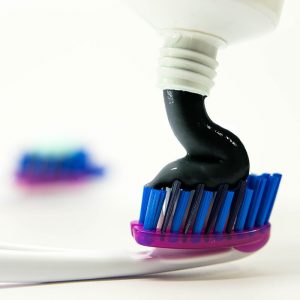IF GIVEN THE CHANCE to change something about their smiles, most people would choose to have whiter teeth, and quite a few are willing to try just about anything for it, including something as counterintuitive as scrubbing them with toothpaste made of charcoal.

The History of Charcoal as a Remedy
The activated charcoal-based dental and skin care products that have been popping up everywhere over the last couple of years aren’t entirely a new idea. Hippocrates of ancient Greece (originator of the Hippocratic Oath and often described as the Father of Medicine) recommended using charcoal to treat black gums and bad breath, and ancient Romans made mouthwashes and tooth powders out of burnt goat hooves.
Charcoal and teeth didn’t mix much from then until charcoal products began popping back up in the late 19th and early 20th centuries. In the 1930s, charcoal dental cream and gum were advertised as a way to get fresher breath and remove tobacco stains. However, the American Dental Association raised safety concerns that led to the discontinuation of such products.
The Incomplete Logic of Charcoal in Toothpaste
Activated charcoal is actually extremely good at absorbing toxins, so the logic is to put that property to work cleaning teeth. It’s a nice theory, but it misses an important part of the picture. Charcoal is a highly abrasive substance, so even while it absorbs harmful compounds and maybe even helps break up surface stains on teeth, it’s also scraping up the enamel and eroding it away.
Furthermore, it doesn’t only absorb bad stuff:
The content on this blog is not intended to be a substitute for professional medical advice, diagnosis, or treatment. Always seek the advice of qualified health providers with questions you may have regarding medical conditions. Top image by Flickr user Marco Verch used under Creative Commons Attribution-Sharealike 4.0 license. Image cropped and modified from original.
